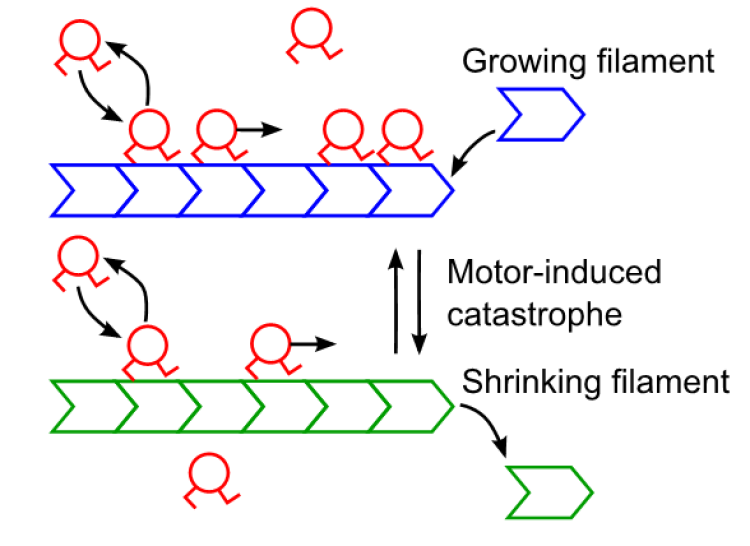Biophysics of filament length regulation by molecular motors
Hui-Shun Kuan and Meredith D. Betterton (2013). Physical Biology10, 036004. arXiv:1302.3196. Download.

Selected as a Most Downloaded Article after online publication in Physical Biology.
Regulating physical size is an essential problem that biological organisms must solve from the subcellular to the organismal scales, but it is not well understood what physical principles and mechanisms organisms use to sense and regulate their size. Any biophysical size-regulation scheme operates in a noisy environment and must be robust to other cellular dynamics and fluctuations. This work develops theory of filament length regulation inspired by recent experiments on kinesin-8 motor proteins, which move with directional bias on microtubule filaments and alter microtubule dynamics. Purified kinesin-8 motors can depolymerize chemically-stabilized microtubules. In the length-dependent depolymerization model, the rate of depolymerization tends to increase with filament length, because long filaments accumulate more motors at their tips and therefore shorten more quickly. When balanced with a constant filament growth rate, this mechanism can lead to a fixed polymer length. However, the mechanism by which kinesin-8 motors affect the length of dynamic microtubules in cells is less clear. We study the more biologically realistic problem of microtubule dynamic instability modulated by a motor-dependent increase in the filament catastrophe frequency. This leads to a significant decrease in the mean filament length and a narrowing of the filament length distribution. The results improve our understanding of the biophysics of length regulation in cells.

